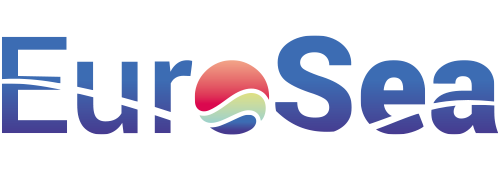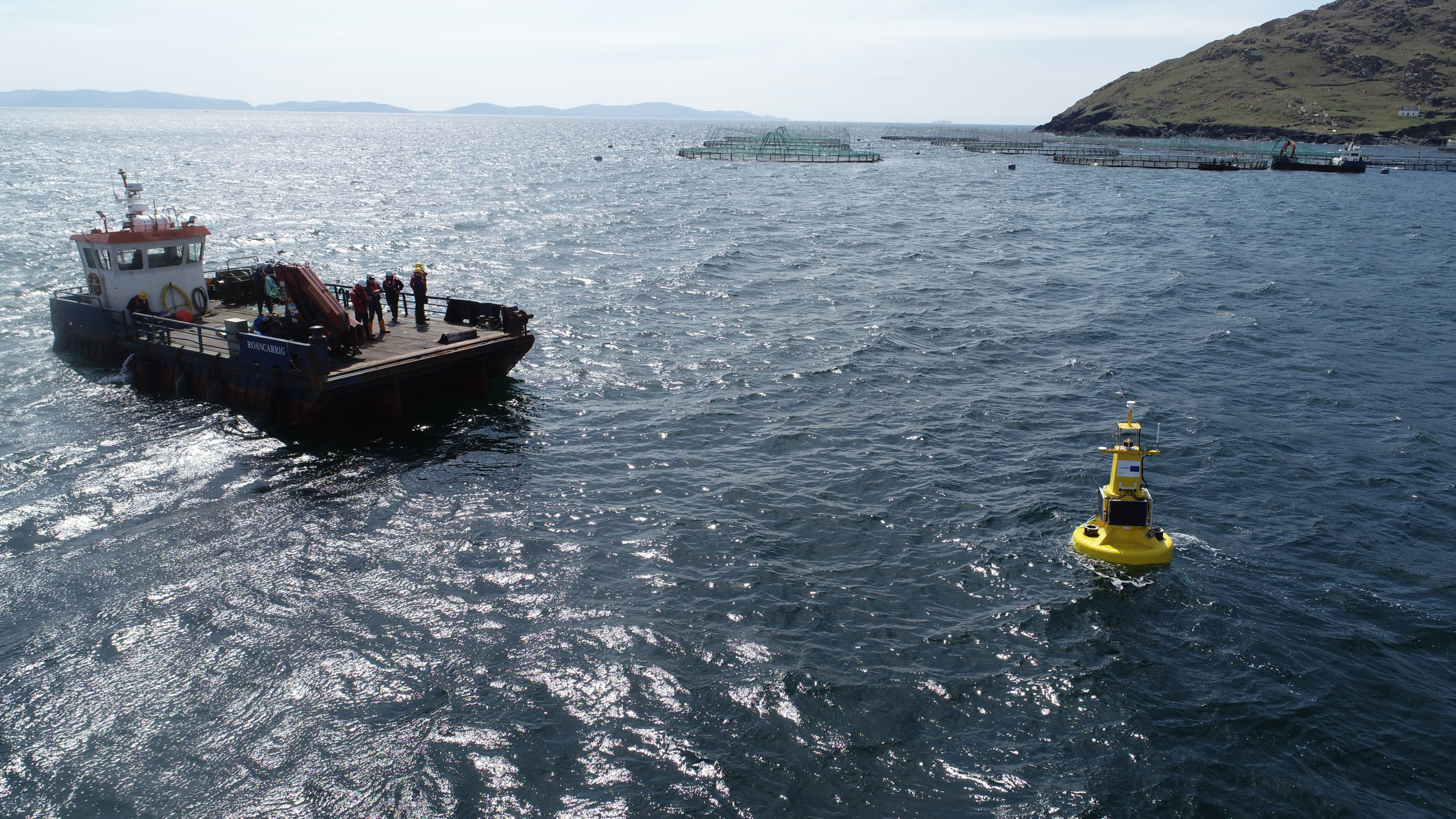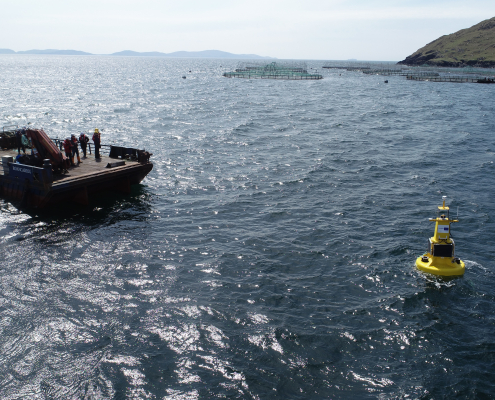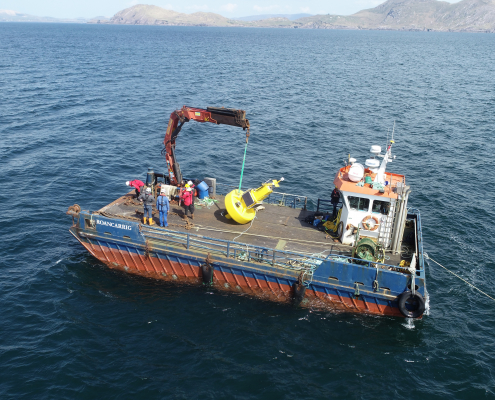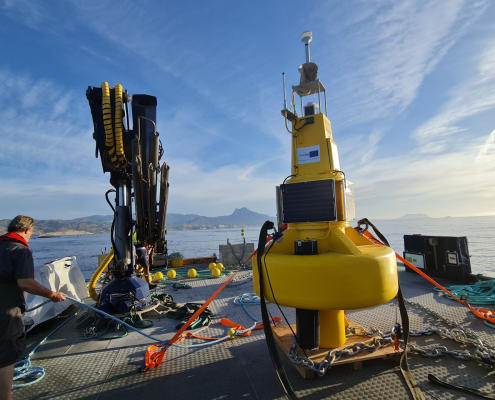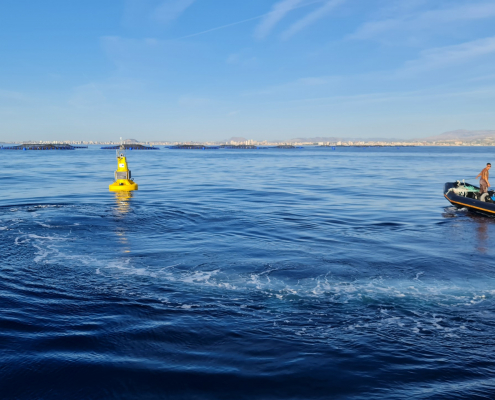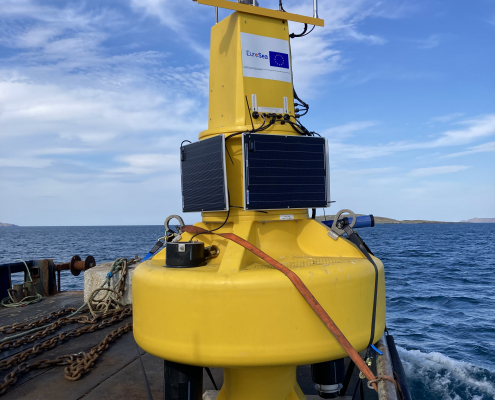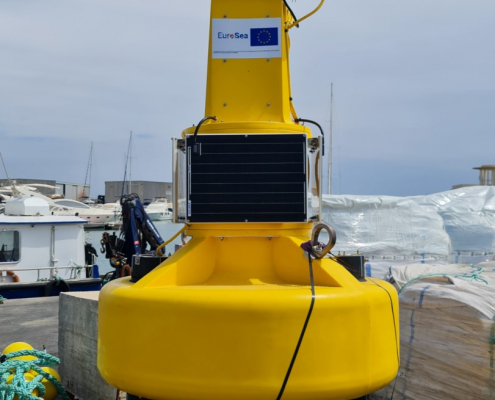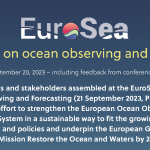In a significant effort to improve ocean health and promote sustainable aquaculture practices, EuroSea has introduced a new initiative in the Iberia-Biscay-Ireland region. Under the purview of the project’s ambitious “Ocean Health Demonstrator”, EuroSea partners Marine Institute, Spanish National Research Council (CSIC), and Xylem / Aanderaa Data Instruments have deployed two MOTUS oceanographic data buoys to collect much-needed data for the region’s aquaculture activities.
The deployment of these buoys, achieved in partnership with co-developers AVRAMAR in Spain and Mowi in Ireland (formerly Marine Harvest), presents a transformative leap for aquaculture activities at Deenish Island on Ireland’s west coast and El Campello in the Western Mediterranean. These tailor-made, state-of-the-art buoys, embodying an integration of advanced instruments, emerge as sentinels of oceanic dynamics. The buoys monitor a comprehensive range of Essential Ocean Variables, such as temperature, salinity, currents, waves, and wind. Additionally, they delve into vital biogeochemical aspects including pH, dissolved oxygen levels, relative fluorescence, turbidity, and chlorophyll concentration. At Deenish Island, the focus lies on maintaining ideal conditions for Atlantic Salmon growth, given their preference for cooler waters. The sensors track various parameters including temperature, salinity, pH, dissolved oxygen saturation, and more. Meanwhile, at El Campello, the buoys aid farmers by providing insights into impending adverse weather conditions that could impact operations
The resultant real-time data cascade serves a long-term pronged purpose. Primarily, it supplies timely information to local fish farm facilities. Moreover, this valuable data is also shared with the Copernicus Marine Service In Situ Thematic Centre, adding to their collection of historical data since June 2022. EuroSea has developed an online web portal, offering easy access to the near-real-time data collected by these innovative buoys. Designed to provide aquaculture industry and researchers with user-friendly access to open data, this portal fosters collaboration, knowledge exchange, and informed decision-making.
The EuroSea “Extreme Marine Events” application delivers in-situ data and forecasts of marine anomalies, such as strong saltwater inflows or dramatic decreases in oxygen concentrations. Collaboratively shaped with input from aquaculture industry leaders, Mowi in Ireland and AVRAMAR in Spain, this setup ensures optimal sensor placements, measurement cycles, and location selections. This, in turn, informs early environmental warnings and contributes to the innovation landscape of commercial sensors. While the buoys were successfully deployed in 2022, this EuroSea activity doesn’t end there. The connection with the Copernicus Marine Service will ensure the data are used in computer models to understand the ocean, apply statistical methods like Machine Learning, and widely share results with users.
EuroSea efforts contribute to steering the aquaculture industry towards a data-driven era of sustainability. Partnership between academia and industry has been paramount for EuroSea to ensure its data and services are fit for purpose for the aquaculture users. The adoption of advanced data acquisition techniques, tailored sensors, and data integration into European portals marks a substantial step towards fostering sustainable aquaculture practices, rooted in scientific understanding.
